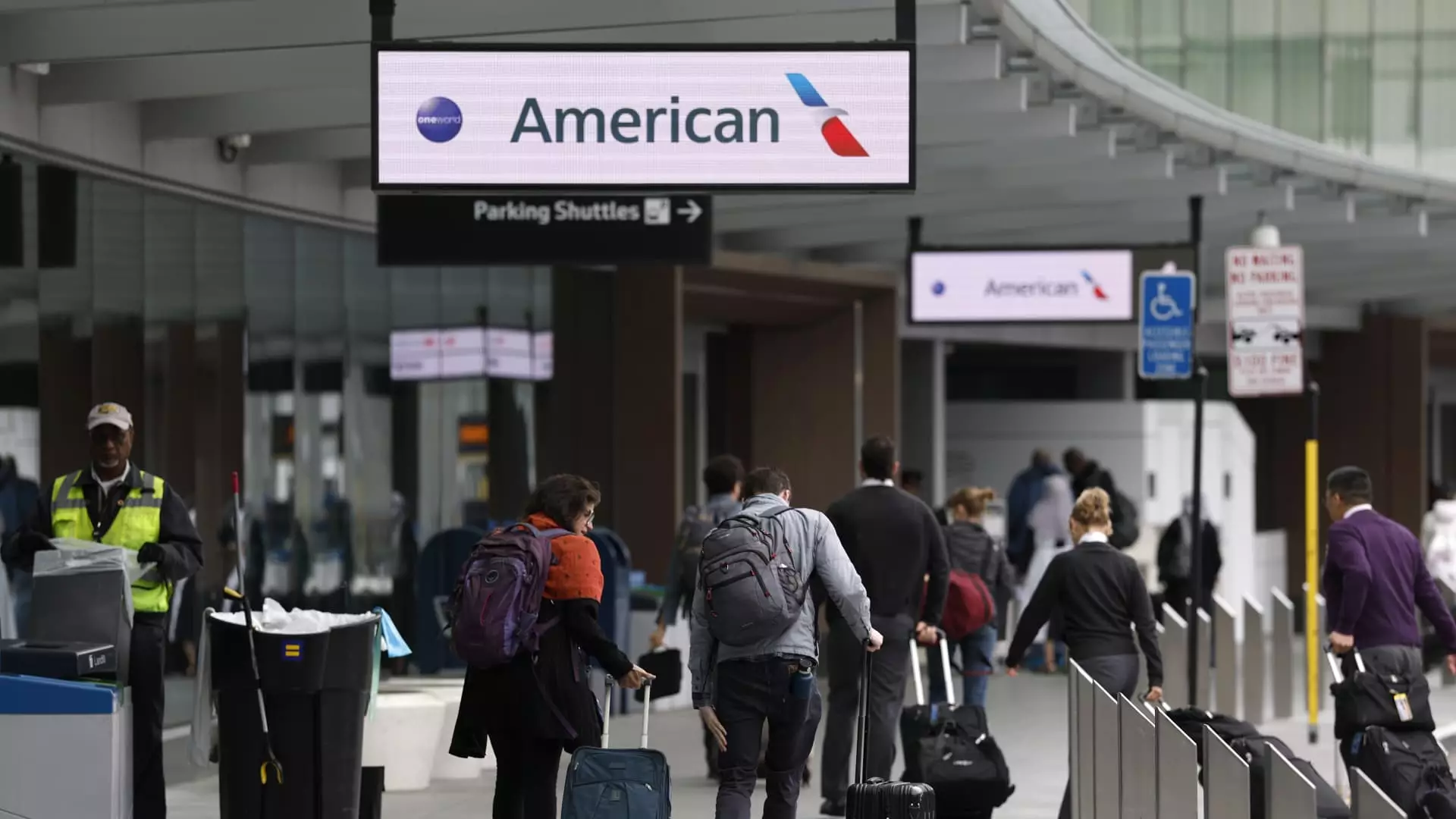In a world that thrives on connectivity, the recent pronouncements from airline executives echo a disconcerting sentiment about the future of domestic air travel. Although we are far removed from the stringent lockdown measures of the pandemic, the aviation industry finds itself perched precariously at the edge of a potential recession, accompanied by cautionary tales from some of its most prominent leaders. Their recent earnings calls have painted a rather dire picture, leading to an atmosphere that is anything but optimistic.
The warnings are not just arbitrary figures thrown at a wall; they stem from an acute awareness of changing economic dynamics in the U.S. The CEOs of major airlines such as Delta, Southwest, and American Airlines have cited a mélange of reasons, from unpredictable tariff policies to faltering corporate travel. Most importantly, it’s the pervasive economic uncertainty that seems to be stifling passenger willingness to book flights. As American Airlines CEO Robert Isom astutely articulated, “Nobody really relishes uncertainty when they’re talking about what they could do on a vacation and spend hard-earned dollars.” In a climate of hesitancy, the prospect of leisure travel metamorphoses into a luxury even the most avid explorers reconsider.
The Elasticity of Demand
This decline in consumer enthusiasm has profound implications for the airlines. A surplus of airline seats translates to pressure on pricing—inevitably leading to cheaper airfare for consumers but accentuating the financial strain for carriers. March witnessed a 5.3% drop in airfare, as reported by the Bureau of Labor Statistics, a stark contrast to the expectations set earlier in the year. It’s a classic case of supply and demand, where excess supply meets faltering demand, and the resultant pitfall is a question not just of profitability for airlines but of sustainability.
Anything but an isolated incident, this phenomenon is poised to ripple throughout the economy. Airline profits are at stake, but this predicament extends beyond the aircraft. The downturn in corporate travel—historically the bedrock of airline revenue—signals a broader malaise. Increased uncertainties in business markets mean that executives, who once easily justified last-minute airfare for critical meetings, are now second-guessing those expenses. “If uncertainty pops up, the first thing that goes away is corporate travel,” remarked travel and transportation analyst Conor Cunningham. The message is clear: as the apprehensiveness mounts in corporate America, so too does the impact on the airline industry.
Trends We Can’t Ignore
What’s even more alarming is the dual challenge of emerging trends and shifting consumer behaviors. The airlines are not merely battling economic headwinds; they are also confronted with a changing landscape of travel preferences. While many airlines are eager to reduce capacity, it’s critical to recognize that business travel is often less sensitive to price variability than leisure travel. This loss of the much-coveted business traveler, who typically does not shy away from premium pricing, further complicates the recovery landscape.
Some airline executives— like Delta’s Ed Bastian—have indicated a slight uptick in corporate travel initially, but such optimistic projections have since flattened. This raises an essential question: are airlines prepared for an economic climate where they can no longer count on the last-minute business traveler to fill their seats? Thus far, the industry’s response has been to lower fares, a move that at best offers temporary relief but signals deeper issues at play.
Aspirations of Recovery Amidst Uncertainty
While it remains crucial to recognize the underlying resilience in the airline industry, it would be naïve to overlook the significant hurdles it must overcome. There are signs of robust demand for travel, particularly for international flights; yet, the domestic landscape is marred in caution. Isom’s belief that “certainty will restore the economy, and I think it will restore it pretty quickly,” is certainly colorful, but whether such recoveries occur promptly is debatable.
In this environment of persistent unease and cautious optimism, the challenge lies in navigating this turbulence effectively. Airlines must rethink not just their pricing strategies but their overall business models—a task easier said than done. They must learn either to adapt to a new economic reality or to risk being grounded in a flightless market that’s still recovering. The uneasy marriage between affordability and profitability has never been more complicated, illustrating a precarious moment for an industry deeply entrenched in both American culture and economic life.

Leave a Reply